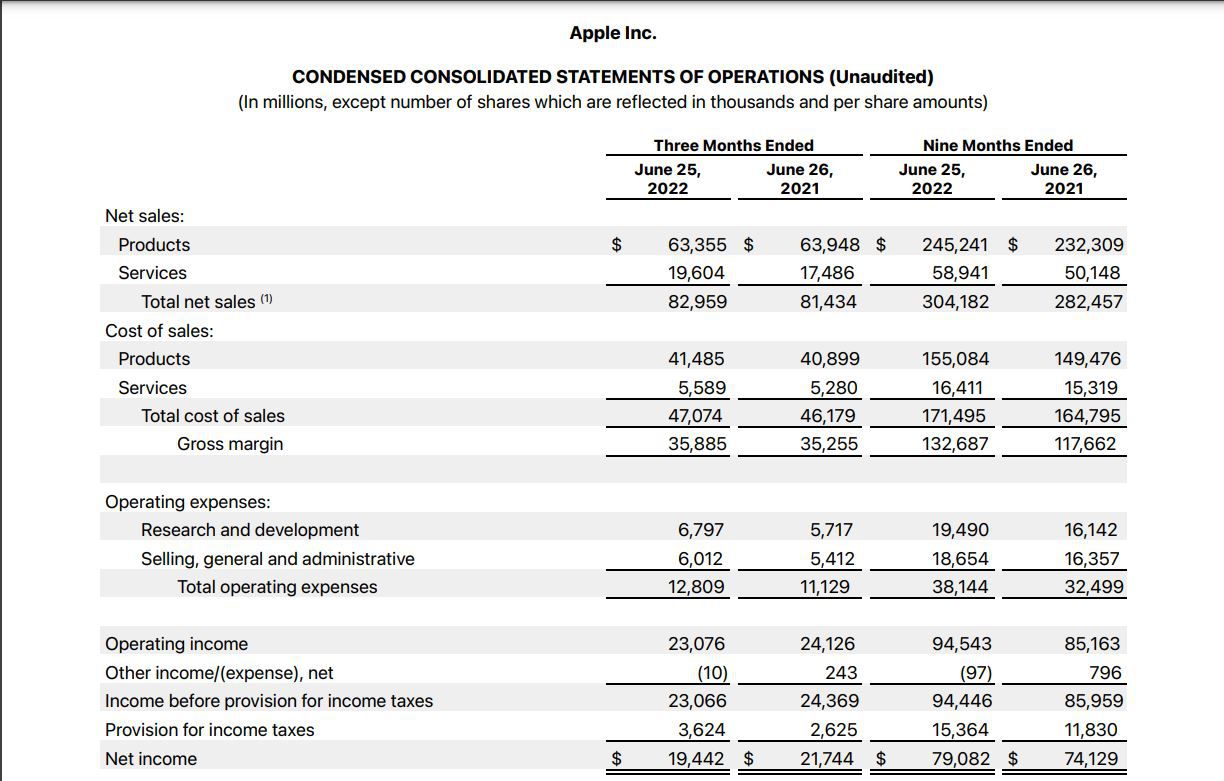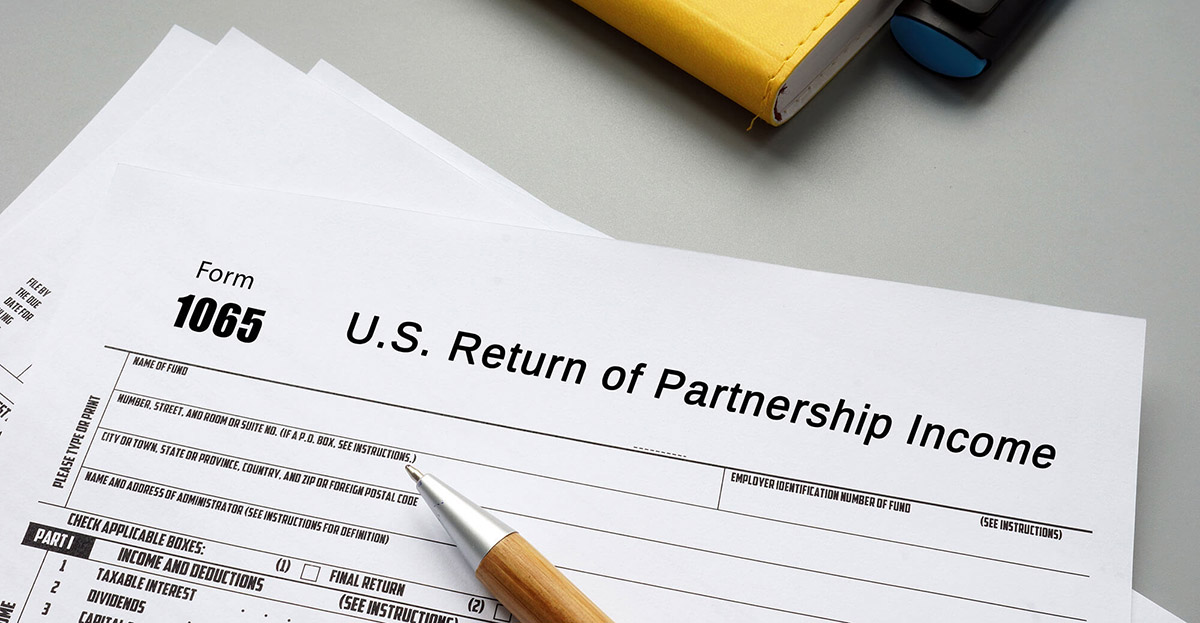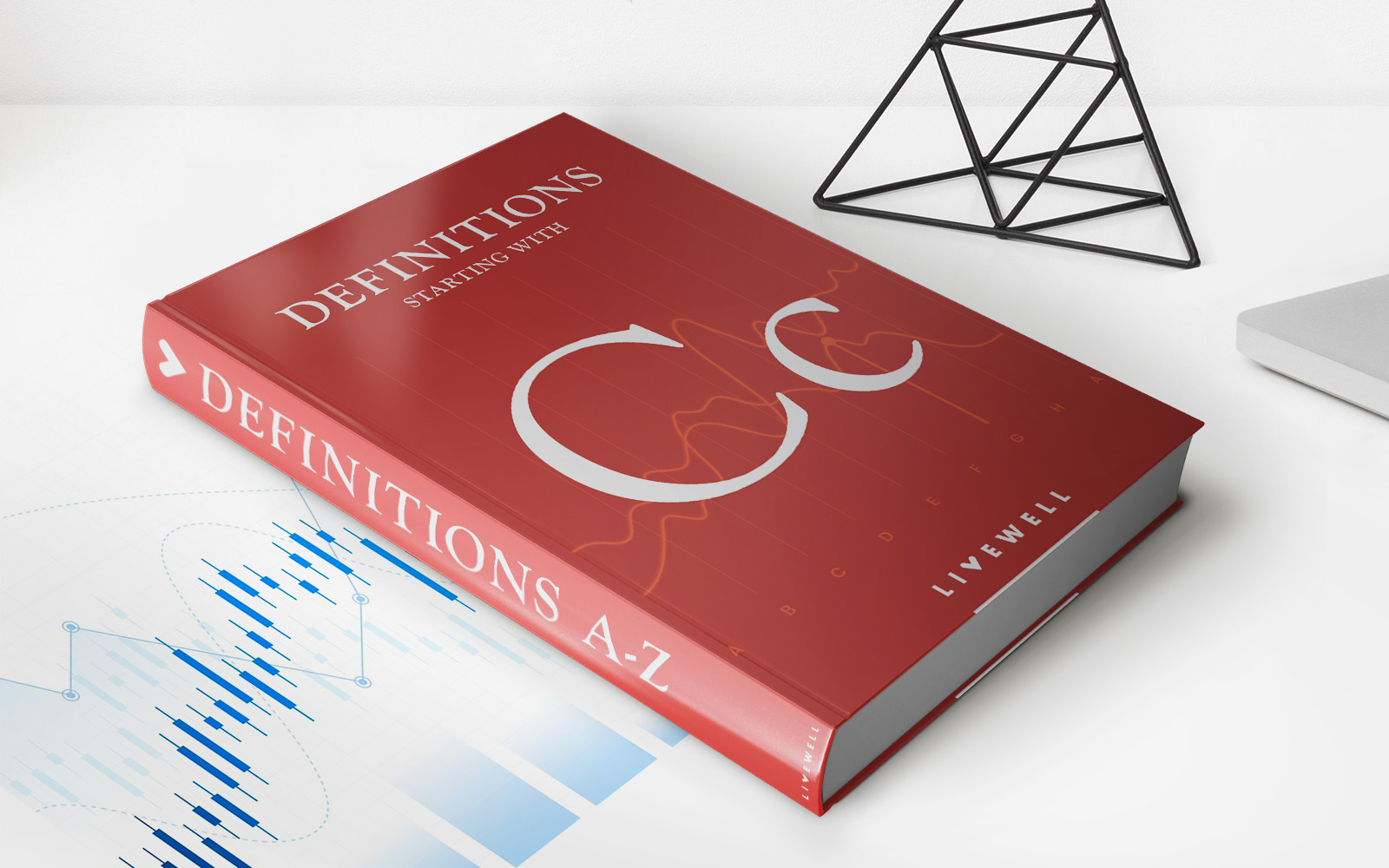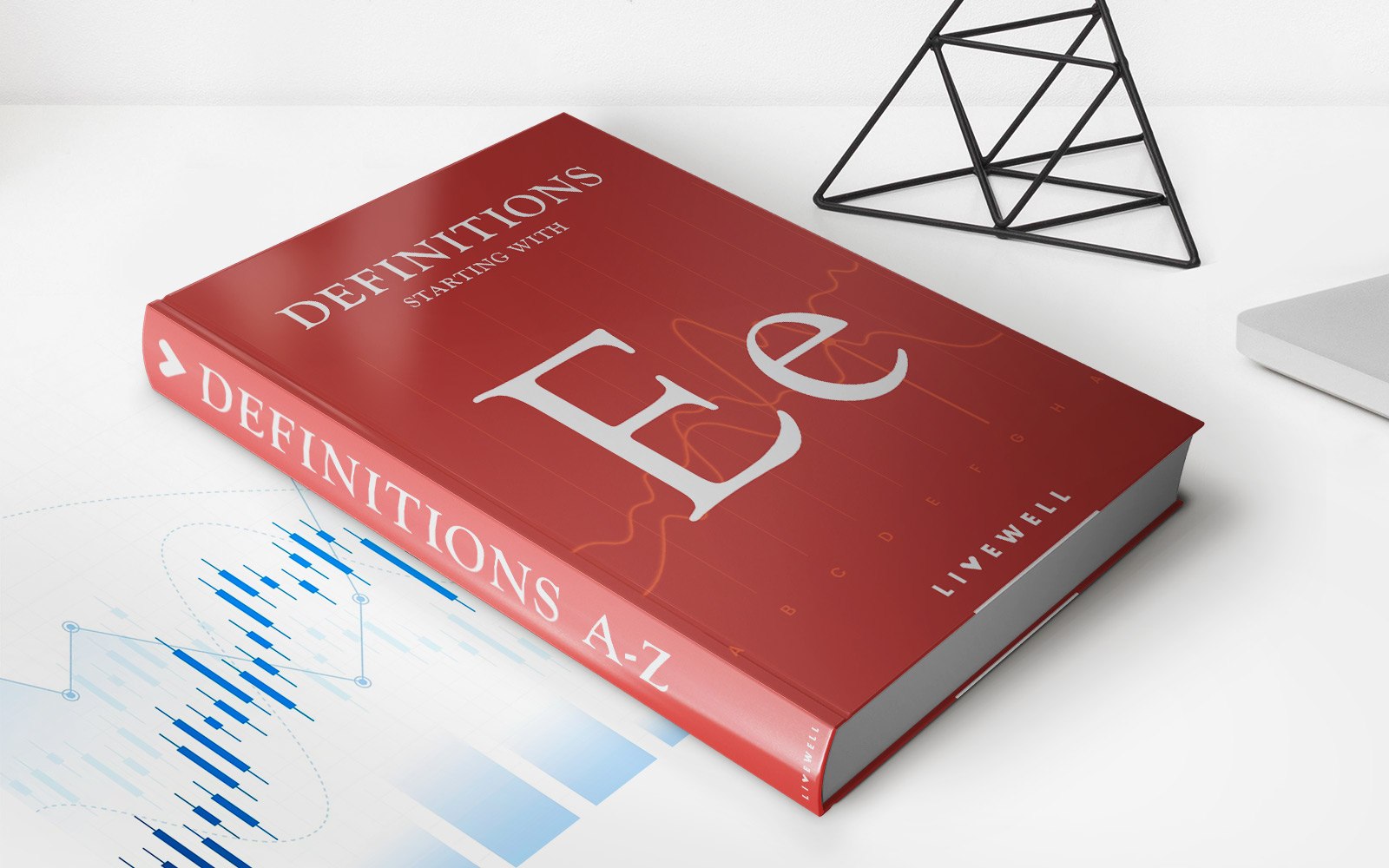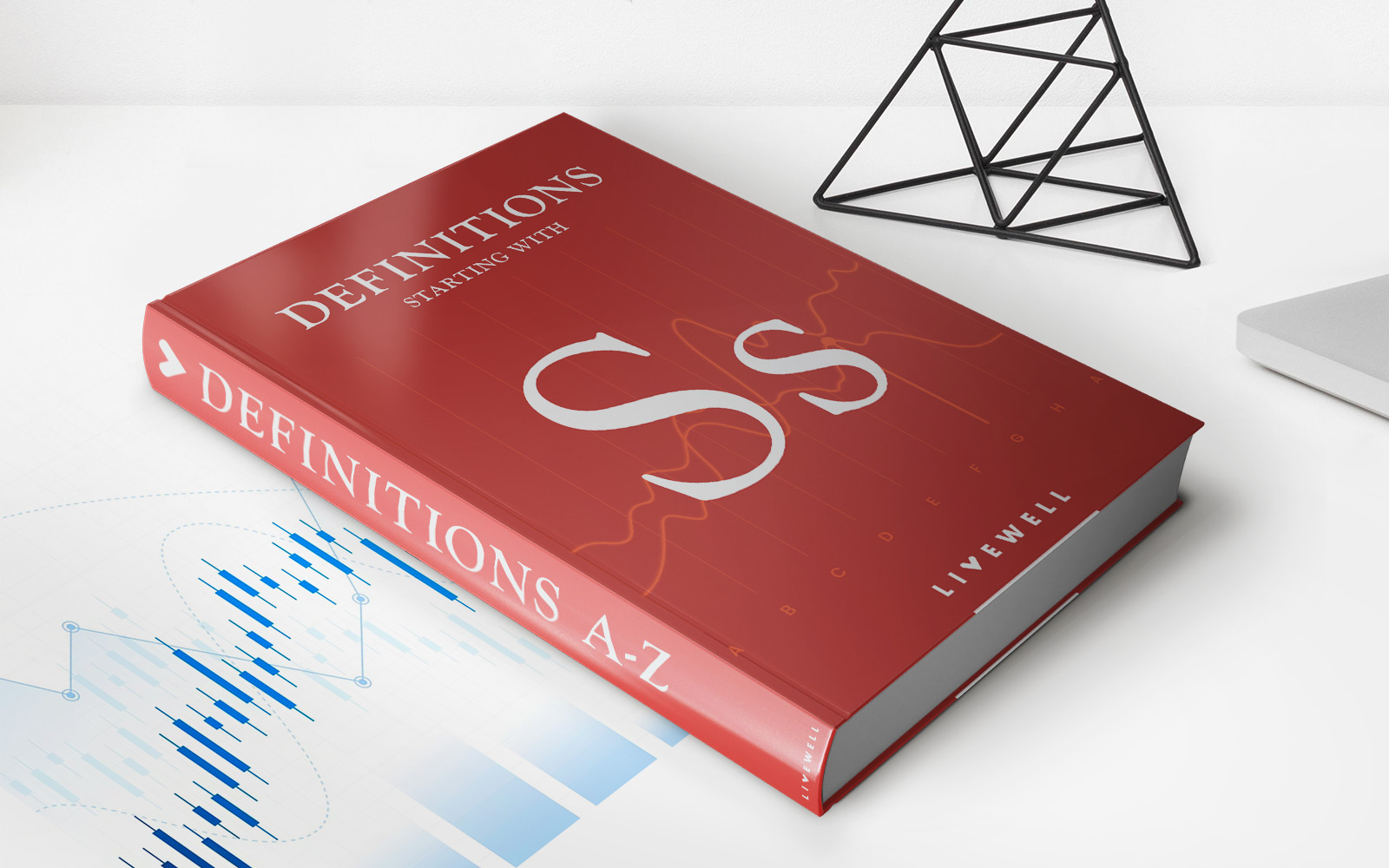Home>Finance>Which Is A Tax-Free Savings Account That Can Only Used For Educational Expenses?


Finance
Which Is A Tax-Free Savings Account That Can Only Used For Educational Expenses?
Modified: December 30, 2023
Finance your education with a tax-free savings account exclusively for educational expenses. Choose the smart way to invest in your future and save on taxes.
(Many of the links in this article redirect to a specific reviewed product. Your purchase of these products through affiliate links helps to generate commission for LiveWell, at no extra cost. Learn more)
Table of Contents
- Introduction
- Definition of a Tax-Free Savings Account
- Purpose of a Tax-Free Savings Account
- Education Expenses Qualifying for Tax-Free Savings Account
- Benefits of Using a Tax-Free Savings Account for Educational Expenses
- Eligibility and Contributions to a Tax-Free Savings Account
- Withdrawals and Limitations of a Tax-Free Savings Account for Education
- Comparison to Other Education Savings Options
- Conclusion
Introduction
A tax-free savings account (TFSA) is a type of investment account that allows individuals to save and grow their money without paying taxes on the investment income earned within the account. These accounts are offered by financial institutions and can be used for a variety of purposes, including retirement savings, emergency funds, and educational expenses.
When it comes to educational expenses, there are specific tax-free savings accounts that are designed to help individuals save and plan for the costs associated with furthering their education. These accounts, often referred to as education savings accounts, have certain criteria and limitations, but can offer significant advantages when it comes to funding educational pursuits.
In this article, we will explore the concept of tax-free savings accounts used for educational expenses. We will delve into the definition and purpose of these accounts, discuss the types of education expenses that qualify, highlight the benefits of using a tax-free savings account for education, explain the eligibility and contribution limits, and examine the withdrawals and limitations of these accounts. Additionally, we will compare tax-free savings accounts to other popular education savings options to help you make an informed financial decision.
Whether you are a student planning for college, a parent saving for your child’s education, or an individual interested in furthering your own skills and knowledge, understanding tax-free savings accounts for educational expenses can empower you to make smart financial choices and achieve your educational goals without the burden of excessive taxes.
Definition of a Tax-Free Savings Account
A tax-free savings account (TFSA) is a specialized investment account that allows individuals to save and invest money on a tax-free basis. Unlike other investment accounts, such as a regular savings account or a registered retirement savings plan (RRSP), any income earned within a TFSA is not subject to taxation.
TFSAs were introduced in Canada in 2009 and have since become a popular savings and investment vehicle. They offer individuals a flexible and accessible way to save and grow their money. The contributions made to a TFSA are not tax-deductible, but the investment income and capital gains earned within the account are tax-free, including interest, dividends, and any profits from the sale of investments.
One of the key advantages of a TFSA is the ability to withdraw funds from the account at any time without incurring tax consequences. This makes TFSAs an attractive option for short-term savings goals, emergency funds, as well as long-term savings objectives, such as retirement or purchasing a home.
It is important to note that there are annual contribution limits imposed on TFSAs. The contribution room accumulates each year, allowing individuals to carry over any unused contribution room. The specific limit is determined by the government and is subject to change. It is essential to stay updated on the current contribution limit to ensure compliance with the regulations.
Overall, a tax-free savings account provides individuals with a unique opportunity to grow their savings and investment portfolio without being taxed on the income earned within the account. Whether you choose to invest in stocks, bonds, mutual funds, or simply keep your money in a high-interest savings account, a TFSA allows you to maximize your returns by eliminating the burden of taxes.
Purpose of a Tax-Free Savings Account
The purpose of a tax-free savings account (TFSA) is to provide individuals with a vehicle to save and invest money on a tax-free basis. TFSAs are designed to help individuals grow their savings and investments without incurring taxes on the income earned within the account. By offering tax advantages, TFSAs serve multiple purposes and can be used to achieve various financial goals.
One of the primary purposes of a TFSA is to provide individuals with a flexible savings option. Unlike other types of registered accounts, such as registered retirement savings plans (RRSPs), TFSAs do not impose strict guidelines on how the funds can be used. This means that individuals can withdraw money from their TFSA at any time, for any reason, without facing taxes or penalties. This flexibility makes TFSAs an attractive option for saving for short-term goals, such as a vacation or a down payment on a home.
Another purpose of a TFSA is to provide a tax-efficient way to save for retirement. While RRSPs have long been the go-to retirement savings account, TFSAs offer an alternative for individuals who may have already maxed out their RRSP contributions or who want an additional tax-advantaged account to grow their retirement funds. With the ability to withdraw funds from a TFSA at any time without incurring taxes, individuals can use their TFSA savings to supplement their retirement income or cover unexpected expenses in retirement.
TFSAs also serve as a valuable tool for individuals looking to grow their investments. Within a TFSA, individuals have the freedom to invest in various financial products, such as stocks, bonds, mutual funds, and even real estate investment trusts (REITs). By investing within a TFSA, individuals can earn tax-free income and capital gains. This can significantly enhance the overall returns on their investment portfolio.
Furthermore, TFSAs can be used as a means to build an emergency fund. By setting aside funds within a TFSA, individuals have a readily accessible source of funds in case of unexpected expenses or financial emergencies. Since withdrawals from a TFSA are tax-free and do not impact eligibility for government benefits, individuals can tap into their TFSA savings without worrying about the financial implications.
In summary, the purpose of a tax-free savings account is to provide individuals with a tax-free vehicle to save and invest money. Whether it’s for short-term goals, retirement planning, investment growth, or creating an emergency fund, TFSA offers flexibility and tax advantages that make it a valuable tool for achieving various financial objectives.
Education Expenses Qualifying for Tax-Free Savings Account
A tax-free savings account (TFSA) can be used to save and invest for various purposes, including educational expenses. However, it’s important to understand which types of education expenses qualify for tax-free treatment within a TFSA. Generally, the expenses must meet specific criteria to be eligible.
Qualified education expenses that can be funded through a TFSA include tuition fees, books, supplies, and other mandatory fees required for enrollment in a recognized educational institution. This can include expenses related to post-secondary education, such as college or university tuition, as well as vocational training programs, apprenticeships, and other types of educational courses.
It’s important to note that expenses related to primary or secondary education, such as tuition for elementary or high school, are not eligible for tax-free treatment within a TFSA. These expenses are typically covered by other programs, such as Registered Education Savings Plans (RESPs) or government education savings grants.
In addition to tuition and mandatory fees, expenses related to eligible educational programs can also include costs for textbooks, course materials, necessary equipment, and even transportation expenses. However, it is essential to ensure that these expenses are directly related to the individual’s pursuit of education and are supported by appropriate documentation, such as receipts or invoices.
It’s worth mentioning that any funds withdrawn from a TFSA for education expenses must be used for the intended purpose. The individual may need to provide documentation or proof of expenses to demonstrate that the funds were indeed used for educational purposes. If the funds are not used for qualifying educational expenses, they may be subject to taxes on the income earned within the TFSA and potential penalties.
Lastly, it’s important to consult with a financial advisor or tax professional to ensure that you are fully aware of the specific eligibility criteria and rules surrounding educational expenses within a TFSA. They can provide guidance and advice tailored to your unique financial situation to ensure compliance with regulations and maximize the benefits of using a TFSA for educational purposes.
Benefits of Using a Tax-Free Savings Account for Educational Expenses
Using a tax-free savings account (TFSA) for educational expenses offers several benefits that can help individuals effectively save and manage their funds for educational pursuits. Here are some key advantages of using a TFSA for educational expenses:
1. Tax-Free Growth: The primary benefit of using a TFSA for educational expenses is the tax-free growth it offers. Any income earned within the account, whether it’s interest, dividends, or capital gains, is not subject to taxation. This means that individuals can maximize their savings and investments by avoiding taxes on the earnings.
2. Flexibility: TFSAs provide individuals with the flexibility to contribute and withdraw funds at any time without facing tax implications. This allows for greater control over the savings and the ability to access the funds when they are needed for educational expenses. Whether it’s paying for tuition, books, or other education-related costs, individuals can easily tap into their TFSA funds without the worry of tax penalties.
3. No Contribution Limit Restrictions: Unlike other educational savings vehicles, such as Registered Education Savings Plans (RESPs), TFSAs do not have annual contribution limits. This means that individuals can contribute as much as they want, within their available contribution room, without being restricted by a specific maximum contribution amount. It offers individuals the freedom to save for educational expenses according to their own financial capabilities.
4. Flexible Investment Options: TFSAs allow individuals to invest their contributions in a wide range of investment products, such as stocks, bonds, mutual funds, and guaranteed investment certificates (GICs). This flexibility provides the opportunity for individuals to potentially earn higher returns on their savings by investing in assets that align with their risk tolerance and financial goals.
5. No Impact on Government Grants: Contributions to a TFSA do not attract any government grants or matching contributions like RESP does. This means that individuals can utilize a TFSA for education expenses without worrying about meeting specific grant criteria or losing out on any potential government contributions.
6. Lifetime Contribution Room: TFSAs offer individuals a cumulative lifetime contribution room, which means that any unused contribution room from previous years can be carried forward into future years. This provides individuals with the opportunity to save and invest larger amounts over time, accommodating their changing educational needs and financial circumstances.
7. Flexibility in Education Choices: Unlike some education savings programs that are limited to post-secondary education, TFSAs can be used for a variety of educational pursuits. Whether it’s vocational training, upgrading skills through courses, or pursuing a degree, TFSA funds can be utilized to support a wide range of educational paths.
It’s important to consider individual financial circumstances and consult with a financial advisor or tax professional to determine the most suitable savings strategy for educational expenses. They can provide personalized guidance on utilizing a TFSA to optimize tax savings and achieve educational goals. Overall, using a TFSA for educational expenses can offer flexibility, tax advantages, and greater control over savings to make education more affordable and accessible.
Eligibility and Contributions to a Tax-Free Savings Account
Eligibility to open and contribute to a tax-free savings account (TFSA) is relatively straightforward, but it’s crucial to understand the requirements in order to maximize the benefits. Here are the key eligibility criteria and considerations for opening and contributing to a TFSA:
1. Age Requirement: In Canada, individuals who are 18 years of age or older are eligible to open and contribute to a TFSA. There is no maximum age limit for contributing to a TFSA, making it accessible for individuals of all ages.
2. Contribution Room: Each individual is granted a specific contribution room, which accumulates starting from the year they turn 18. The current annual contribution limit is set by the government and is subject to change. It’s important to stay informed about the annual limit as exceeding the contribution limit can result in penalties.
3. Carry Forward Room: TFSA contribution room can be carried forward. This means that any unused contribution room from previous years can be carried forward into future years. Unused contribution room does not expire and can be used at any time within your lifetime.
4. Canadian Residency: To be eligible for a TFSA, an individual must be a resident of Canada for tax purposes. Non-residents are generally not eligible to open a TFSA, even if they have a valid Social Insurance Number (SIN).
5. Contribution Limits: TFSA contributions are not tax-deductible, but the income earned within the account is tax-free. The contribution limit varies each year, and it’s important to keep track of your contributions to avoid exceeding the annual limit and incurring penalties.
6. Over-Contribution Penalties: Contributions in excess of the allowable limit are subject to a penalty tax of 1% per month on the excess amount until it is withdrawn or additional contribution room becomes available. It is crucial to monitor your contributions to ensure compliance with the regulations.
7. Eligible Investments: TFSAs offer a wide range of eligible investment options, including cash, mutual funds, stocks, bonds, and guaranteed investment certificates (GICs). Individuals can choose investments based on their risk tolerance and financial goals.
8. Limited to One TFSA Account: Individuals are limited to one TFSA account per person. However, it is possible to have multiple TFSA accounts with different financial institutions, as long as the total contributions across all accounts do not exceed the annual contribution limit.
By meeting the eligibility requirements and adhering to the contribution limits, individuals can maximize the benefits of a TFSA. It’s important to assess your individual financial situation and goals and consult with a financial advisor or tax professional to develop a TFSA strategy that aligns with your specific needs. With proper planning, a TFSA can be a valuable savings and investment tool for individuals of all ages and income levels.
Withdrawals and Limitations of a Tax-Free Savings Account for Education
When it comes to using a tax-free savings account (TFSA) for education, there are certain limitations and guidelines to keep in mind. Understanding the withdrawal rules and limitations will help individuals effectively plan and utilize their TFSA funds for educational expenses. Here are some key considerations:
1. Tax-Free Withdrawals: One of the main advantages of a TFSA is the ability to withdraw funds tax-free. As long as the funds are used for qualifying educational expenses, such as tuition fees and required course materials, the withdrawals from a TFSA for education purposes are not subject to taxation.
2. Maintenance of Contribution Room: When funds are withdrawn from a TFSA, the contribution amount is not permanently lost. The withdrawn amount is added back to the individual’s contribution room in the following calendar year. This means that individuals can recontribute the funds in the future without exceeding their contribution limit.
3. Documentation and Verification: To ensure compliance with tax regulations, it is important to retain receipts and documentation verifying that the TFSA withdrawals were indeed used for qualifying educational expenses. The Canada Revenue Agency (CRA) may require proof of expenses in the event of an audit or review.
4. No Impact on Government Grants: TFSA withdrawals for education expenses do not affect eligibility for government grants or educational assistance programs. Unlike other education savings options, such as Registered Education Savings Plans (RESPs), TFSA withdrawals do not impact the calculation of various grants or student loans.
5. Contribution Room Limitations: While TFSAs do not have annual contribution limits, it is essential to consider the available contribution room when making withdrawals for educational expenses. If the TFSA is close to reaching the maximum contribution limit, withdrawing funds for education may restrict the ability to recontribute substantial amounts in the future.
6. Consider Other Education Savings Options: While a TFSA can be a useful tool for saving for education, it’s important to evaluate other education-specific savings accounts, such as RESPs or education savings plans offered by financial institutions. These accounts may provide additional tax advantages and government grants specifically designed to support education savings.
7. Individual Financial Circumstances: The decision to use a TFSA for education expenses should be based on individual financial circumstances and goals. It’s important to consider factors such as long-term financial plans, risk tolerance, and the availability of other sources of funding for educational expenses.
By understanding the withdrawal rules and limitations, individuals can effectively plan and utilize their TFSA funds for educational purposes. It’s advisable to consult with a financial advisor or tax professional to ensure compliance with regulations and to develop a tailored strategy that aligns with the individual’s specific financial goals and circumstances.
Comparison to Other Education Savings Options
When it comes to saving for education, there are various options available to individuals and families. While a tax-free savings account (TFSA) can be a viable choice for funding educational expenses, it’s important to compare it to other education savings options to determine the most suitable approach. Here’s a comparison of TFSA to other popular education savings options:
1. Registered Education Savings Plans (RESPs): RESPs are specifically designed to save for post-secondary education. They offer government grants, such as the Canada Education Savings Grant (CESG), which can significantly boost savings growth. Unlike TFSAs, contributions to RESPs are not tax-deductible, but the investment growth is tax-free until withdrawn for educational purposes. RESPs also have specific rules and restrictions on contributions, grants, and withdrawals.
2. Education Savings Plans: Some financial institutions offer education savings plans, which are designed to save for education expenses. These plans may have specific investment options and contribution rules. While these plans may offer unique benefits, it’s important to compare fees, flexibility, and the range of investment options available to ensure they align with your goals and preferences.
3. Personal Savings: Individuals can choose to save for education through personal savings accounts, such as high-interest savings accounts or GICs. Personal savings offer flexibility and accessibility but may not offer the same tax advantages or potential growth as TFSA or education-specific accounts. Personal savings also do not attract government grants.
4. Student Lines of Credit or Loans: In cases where immediate funding is needed for education, individuals may consider student lines of credit or loans. While these options provide access to funds, they need to be managed carefully to avoid excessive debt and high interest payments.
When comparing education savings options, consider factors such as tax advantages, government grants, investment options, potential growth, contribution restrictions, and accessibility. It’s important to assess your individual financial situation, long-term goals, risk tolerance, and the specific education costs you anticipate.
It may be beneficial to consult with a financial advisor or tax professional who can provide personalized advice based on your circumstances. They can help you evaluate the options, navigate the complexities of different accounts, and develop a comprehensive education savings plan that aligns with your goals and maximizes your savings potential.
Ultimately, the best education savings option will depend on your specific preferences, financial goals, and the available resources for funding educational expenses.
Conclusion
Choosing the right savings strategy for educational expenses is crucial for individuals and families. A tax-free savings account (TFSA) offers several advantages when it comes to funding education. It provides tax-free growth, flexibility in contributions, and the ability to withdraw funds tax-free for qualifying educational expenses. However, it’s important to consider other education savings options and carefully evaluate their specific benefits and limitations.
Registered Education Savings Plans (RESPs) are tailored specifically for education savings and offer government grants, while education savings plans may provide unique investment options. Personal savings accounts and student loans can also be considered depending on individual circumstances.
When deciding on the best savings strategy, it’s important to assess factors such as contribution limits, tax advantages, investment options, and accessibility. Understanding the eligibility criteria, withdrawal rules, and documentation requirements associated with education expenses within a TFSA is essential to utilize the account effectively.
Seeking advice from a financial advisor or tax professional will help in crafting a personalized education savings plan that aligns with your financial goals and circumstances. They can assist in maximizing the benefits of a TFSA or choosing alternative strategies that best suit your needs.
Ultimately, the goal is to create a reliable and efficient savings strategy that provides the necessary funds to support educational pursuits while minimizing financial burden. By carefully considering the available options and seeking professional guidance, individuals and families can make informed decisions and pave the way for a brighter educational future.





